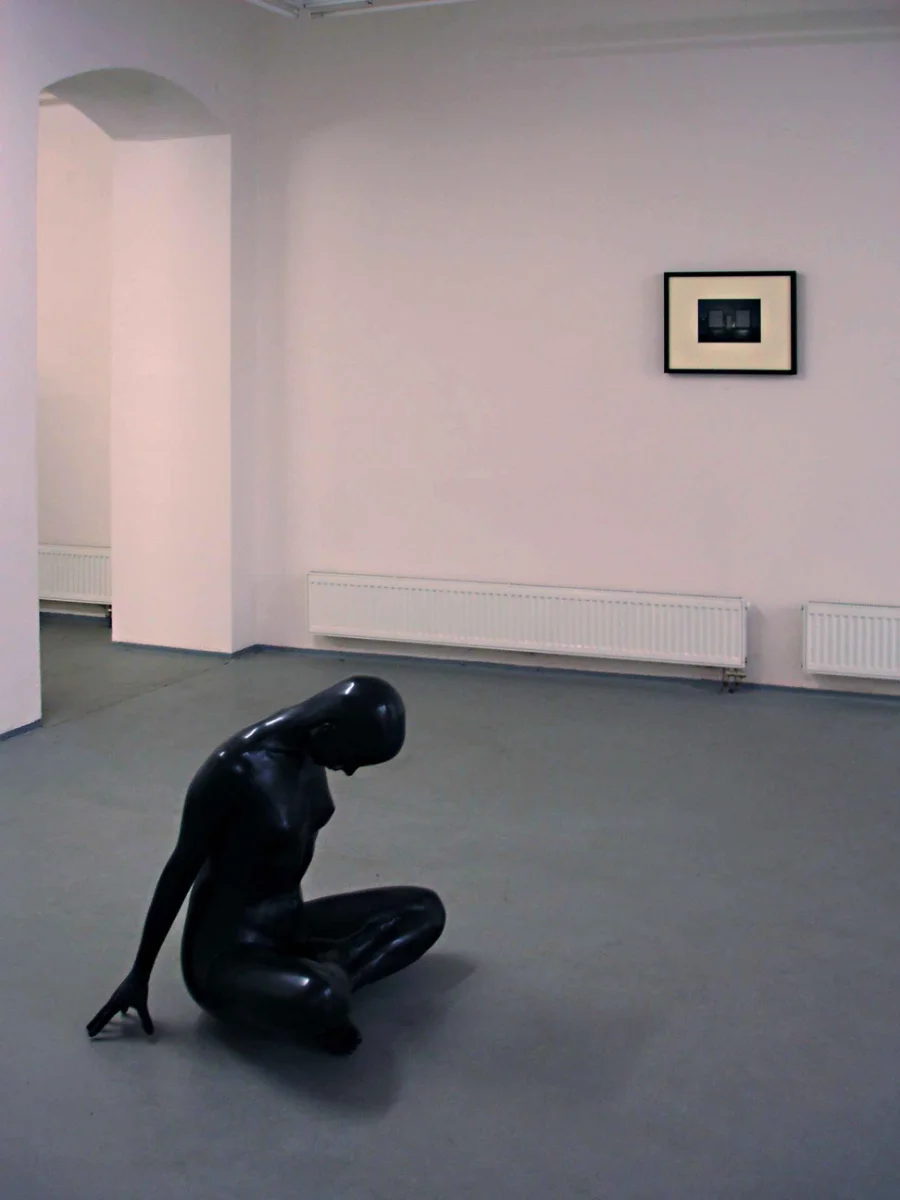David Moješčík deviates from the framework of today’s Czech sculpting with his work. He finds inspiration where others don’t. He allows himself to be influenced by sculptures that many still look down upon today. The result of his precise work is only a few sculptures, most of which, however, seem to be torn from the current of constant change. D. Moješčík stands outside the mainstream, is neither “cool” nor “in” and yet brings something strangely new, exciting in its timelessness, ambiguity and elusiveness.
After graduating from the stone sculpture school in Hořice, David Moješčík studied in M. Gabriel’s sculpture studio at the FaVU in Brno. There he gained his first experience with polyester – a material that became his main means of expression. Moješčík can use all its strengths. Thanks to this, he can vary his sculptures in many different attitudes, positions and poses, which he would not be able to achieve with the help of classical sculpture materials.
D. Moješčík, as one of the few contemporary artists, finds inspiration in the sculpture of ancient Egypt. Hence his fascination with the closed, smooth and polished form. The Egyptians gave the figure the greatest possible appearance of verisimilitude and life by inserting imitation glass into its eye sockets. The same method of revival is used by D. Moješčík. However, we can also find certain differences – above all, what concerns the material understanding of the sculpture. Moješčík’s sculptures are not a closed block of cold, inert material. Matter is thematized in his works from different points of view.
In addition to Egypt, D. Moješčík is also influenced by the legacy of European classicism. From his sculptural canon, David Moješčík chose above all an inclination towards precision and maximized truthfulness, as well as a desire for an ideal shape as the sum of the forms of individual prototypes. For classicism, however, this tendency was fatal: it resulted in coldness and aloofness. D. Moješčík successfully avoids these pitfalls by constantly oscillating between idealizing stylization and veristic transcription. After all, it is this author’s inner movement that gives the sculptures interesting dynamism and tension.
Both idealization and naturalism of Moješčík’s sculptures are only a matter of first and superficial perception. The author does not simplify the path for the viewer – to the statue, i.e. to what is hidden. He plays with the details. He realistically models the neck, feet, hands, back, and puts glass eyes on his sculptures. Even the smooth surface of his sculpture-bodies tempts us to jump to conclusions. The color of the surface often helps. With all this, the author intentionally creates the impression of an objective transcription of reality. However, Moješčík is not concerned with the first-class effectivity of veristic realism, to which many authors before him slipped. It has nothing to do with Hanson and other authors who dealt with the rewriting of the figure within the pop art movement. Moješčík does not want to play with the icons of mass society, he is not fascinated by them.
His characters seem to huddle together. He crouches. Not, of course, as we know it from Gutfreund’s Anxiety. They don’t make us feel cold looking at them, but they are strangely cold at first glance. The coldness that can perhaps melt in the mind under the impression of that initial superficial play on reality, only works for a short time. After a while, you will realize that the sculptures do not shrink under the influence of the external environment. They look more like they are spinning around their center. However, that center is not matter, but emptiness, if we realize that the figures are hollow inside. Their mantle, separating the inner from the outer, envelops the void. And the emptiness of Moješčík’s sculptures radiates and shines. It seems, I would say, “energetic”. The author perhaps indicates the transformation of the material – skin – skin – mantle into an immaterial nothing. The matter of the body here contemplates itself. As if D. Moješčík wanted to confirm in his figures the thesis about the immaterial nature of matter, as we learn about it in East Asian philosophical and religious systems and in modern quantum physics.
The hidden immateriality and apparent subtlety of material sculptures at first glance is connected with another aspect of Moješčík’s figures, which forms another layer of that inner tension. The other pole is the strange contradiction between the naturalistically shaped gender and the overall genderless tone of the characters. The signs of gender seem to be out of place here and on top of that. As if they were only what remained, whose essence had been transformed long ago. From that point of view, the means of physical creation could then be perceived as an attribute of spiritual creation. Moješčík’s at first glance beautiful women prove their asexuality with their ideal coldness. These are some kind of ethereal figures that, according to one of the names, could be called angels. For clumps of matter-energy that seem to last only a moment and then dissolve again into nothingness. They are shapes whose prototype (eidos –idea) is perhaps present somewhere and now just for a moment appeared from under the hands of the artist, pressed into the material to impress with its otherness, ethereality, elusiveness. These clusters of energy are so far and yet so close. They may be here with us without us knowing about them. It is the same with Moješčík’s sculptures: they do not force themselves into our field of vision, but their present accented non-participation is one of the aspects that make them the object of our interest.
Martin Mikolášek, 2006

